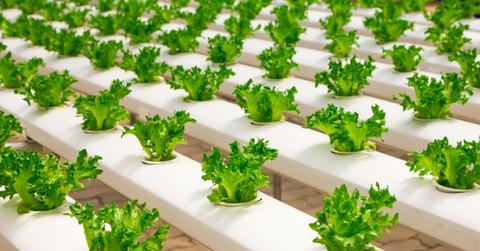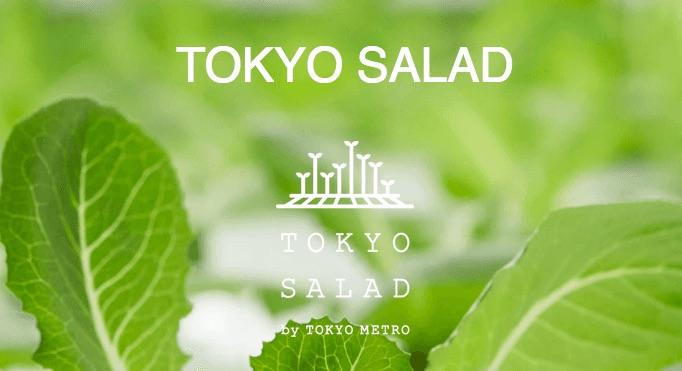Tokyo Rail Operator Explores 'Train To Table' Urban Farming
Tokyo Metro is exploring urban farming by growing hydroponic greens in an unused warehouse space below the system’s elevated transit lines.
Updated May 28 2019, 5:43 p.m. ET
As urban farming becomes increasingly popular across the globe, Tokyo's most-used rapid transit system, Tokyo Metro, is dabbling in hydroponic farming in an unused warehouse space below the system’s elevated transit lines.
The project, called Tokyo Salad, takes the idea of urban farming to the next level. Celebrated as a way to save resources by bringing food closer to the people who consume it, urban farming often takes place on rooftops or the walls of hip restaurants. Tokyo Salad, however, is both using an under-utilized space and growing food where millions of people pass through every day.
The Tokyo Salad facility houses 400 plants of 11 varieties of greens, including basil, kale and lettuces. The greens are grown without the use of soil or fertilizers under LED lights that shine on the plants 16 hours a day. The plants are watered with a mist that contains necessary minerals such as zinc, phosphorous and potassium.
Hydroponic farming has many benefits. It reduces energy and water use, creates a perennial food system, and can be done anywhere. But Tokyo Salad says it's system is even more sophisticated: It can turn seeds to greens in just five weeks with a method that it's calling a "trade secret," and though the plants are growing beneath a railway system, its operation is "uber-hygienic."
Like in most parts of the world, urban and hydroponic farming is just getting off the ground in Japan and won't change the food system on a mass scale quite yet. For now, most of Tokyo Salad’s customers are high-end restaurants in Tokyo, not the food halls and mom-and-pops that make up most of the country's food system. But nonetheless, this style of farming could help solve some of the problems that are unique to Japan.
Japan's population is decreasing and is expected to continue decreasing in the coming years. The country's farming population is aging out of the business, but a new generation of farmers isn't stepping to take their place. Farm lands are being abandoned as more young people move to the urban centers, creating a shortage of home-grown food in the country.
Innovations like Tokyo Salad offer solutions to these problems on several fronts. By taking place in a city, urban farming can attract a new generation of workers that don't want to live in rural areas while also regenerating the supply of locally grown food. On top of that, the fact that Tokyo Metro is taking this on shows an innovation for a business that is based on high populations—with the popultion dropping, metro ridership will drop, forcing railway operators to consider supplemental businesses to stay up-and-running.
"Technology could help Japan scale up its local food production, especially if unused spaces long assumed hostile to raising food, like old warehouses, can increasingly do so cost effectively and at a profit," according to Triple Pundit. "And if that technology transfer can move across borders and become affordable, urban farming could feed the world and create a new wave of jobs."
Growing lettuce in unused parts of a train station just might be the answer.

